Four UT Physics Students Win DOE SCGSR Support
June 27, 2024
UT's campus may be a little quieter during summer, but that doesn't mean science stops. With help from the US Department of Energy, our graduate students are exploring exotic behavior in materials, measuring why carbon doesn't fly apart, and testing the limits of the Standard Model of Physics. James Christie, Love Christie, Andy Tanjaroon Ly, and Jinu Thomas are among 86 students who learned this spring their thesis research will be supported by the DOE Office of Science Graduate Student Research (SCGSR) program.
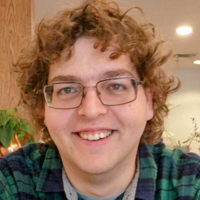
James Christie
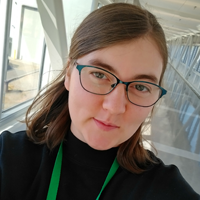
Love Christie
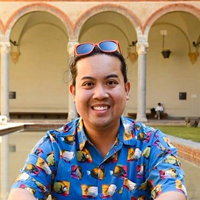
Andy Tanjaroon Ly

Jinu Thomas
Teaming students with state-of-the-art facilities at national laboratories, the SCGSR effort develops a new generation of scientists to lead innovation and discovery critical to the agency's mission. While the students' research projects may differ, the overall goal is the same: to learn more about the how nature works at a fundamental level.
Tanjaroon Ly and Thomas are both working with Professor Steve Johnston to investigate the inner workings of materials.
Tanjaroon Ly will develop computational models to study exotic superconducting states, where electric current moves through a material without losing energy. Working at Oak Ridge National Laboratory (ORNL), he'll use Monte Carlo simulations to carry out his research. Named for the famed casino, these calculations are a powerful tool using random sampling and probability to generate possible mathematical simulations for new states.
Thomas is working with quantum materials—those whose properties can't be described by the classical laws of physics. He's focusing on out-of-equilibrium systems that can drive novel phenomena, using time-resolved resonant inelastic X-ray scattering (tr-RIXS) to explore that behavior. Under Johnston's supervision, Thomas will work with Dr. Mark Dean at Brookhaven National Laboratory.
While Tanjaroon Ly and Thomas deepen our understanding of materials, James and Love Christie are studying the carbon present in our cells and the model describing the building blocks of the universe.
Working with Assistant Professor Miguel Madurga at ORNL, James Christie is taking a closer look at the Hoyle state, the source of most of the carbon on Earth (including in humans). In this state, excited carbon can de-excite and turn into ground state carbon-12, which makes up nearly 99 percent of the carbon on our planet. His research focusses on measuring how often that transition happens instead of the excited carbon simply flying apart.
Love Christie will also be at ORNL, working with Professor Nadia Fomin on uncertainty studies for the Nab experiment. Using the Spallation Neutron Source's powerful neutron beam, the experiment will provide precise testing of neutron decay parameters predicted by the Standard Model of Physics, the framework for the particles and forces foundational to our understanding of the universe.
What brought these four students to Knoxville is in many ways a combination of UT's strengths: the chance to be part of a strong research program at a large university that's also close to home.
Tanjaroon Ly is from St. Petersburg, Florida, and earned his bachelor's degree in physics and math at the University of Florida.
"I decided to attend UT based on the strength and diversity of the condensed matter research," he said, noting the proximity of ORNL and the opportunity for collaborations there.
Thomas is originally from Kochi, Kerala, in southern India. He moved to the United States in 2009 and spent most of his time in Illinois, Indiana, and Wisconsin before moving to Knoxville for graduate school. After graduating from the University of Illinois at Urbana-Champaign with a degree in engineering physics, he said "visiting UT gave me the 'big' school feel I had as an undergrad. Having been away from physics for four years, the program here felt better suited to help me learn. Plus, it's beautiful here in East Tennessee."
For James Christie and Love Christie, who hail from Campbellsville and Richmond Kentucky, respectively, family made the difference. Both graduated from Eastern Kentucky University (James in physics with minors in chemistry and math; Love with a dual degree in physics and math).
Coming to UT meant "I stayed close to home, which is really nice," James Christie said. "My family's really important to me, so being close to home is good."
Love Christie saw twin benefits in UT's graduate physics program.
"It was the best option for following my passion and staying close to my family simultaneously," she said.
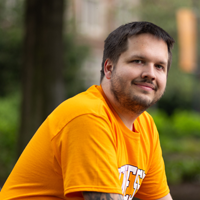
Charles Bell
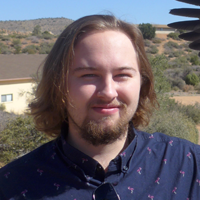
Colter Richardson
Since 2016, 13 UT physics students have won SCGSR funding to help them untangle scientific questions as they work toward their graduate degrees. These latest awards are among multiple honors the department's students won this spring, including a prestigious National Science Foundation Graduate Research Fellowship for Charles Bell, who finished an undergraduate degree in May and will begin graduate studies at the University of Michigan this fall. A US Navy veteran, he worked with Assistant Professor Larry Lee in the Compact Muon Solenoid research group, where he helped create a visualization for a possible muon collider detector. The artwork made the cover of Science Magazine.
Graduate Student Colter Richardson also won support through the UT-Oak Ridge Innovation Institute Graduate Advancement, Training and Education (GATE) fellowship program. He'll work with Professor Anthony Mezzacappa on Bridging Data Analysis and Physical Modeling of Core-Collapse Supernovae. He's the eighth physics graduate student since 2020 to secure GATE funding.
Learn more about our graduate program in physics.